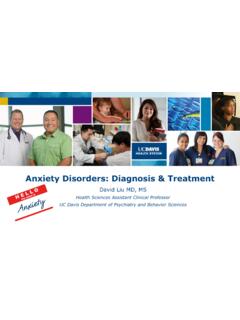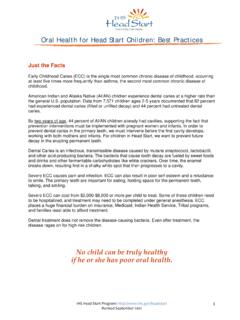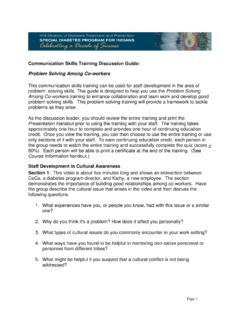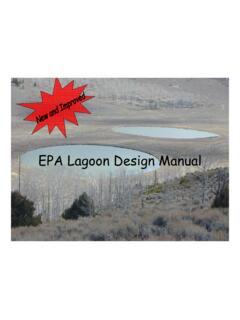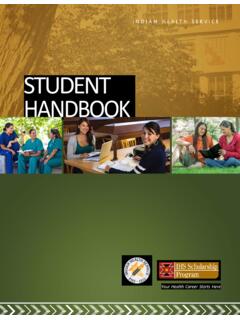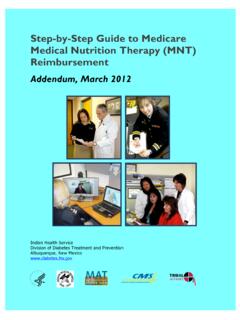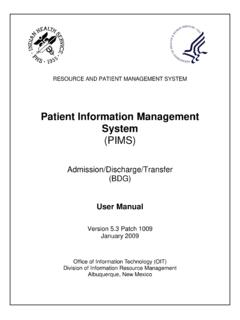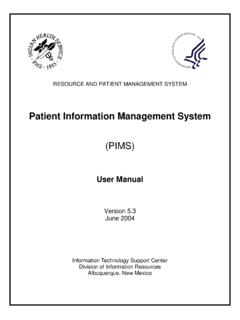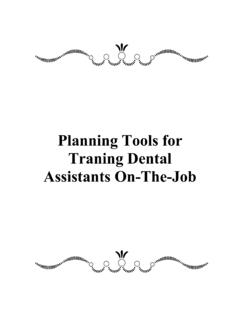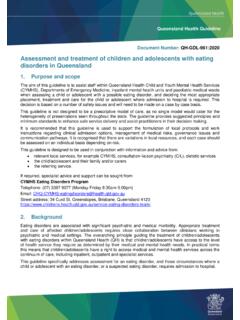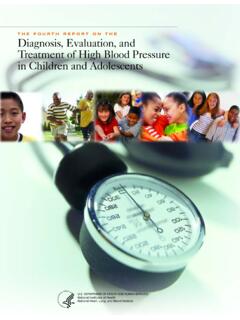Transcription of Anxiety Disorders in Children and Adolescents
1 Molly Faulkner, PhD, CNP, LISW Cl inical Director oftheState WorkforceInitiativ e UNM,Deptof Psychiatryand Behavioral Sciences Divis ion of CommunityBehavioral HealthAnxiety Disorders in Children and Adolescents Anxietydisordersarethemost frequentmentalhealthproblemsseenin primarycareandchildps ychiatry. Why topicimportant? Epidemiology Susceptibility Models Types ofAnxiety Disorders ChildrenandAdolescents Changes in DSMV Assessment Recognizerisk factors for & presentingsigns& symptomsofanxietydisorders Treatment Review evidencebasedbehavioral & (s ome)pharmaco logic managementofanxietyin childrenand Adolescents ResourcesObjectives Many childrensufferfromanxiety~ Occursin 5%to 19%ofallchildren andadolescents Under12prevalence between separati on anxietythe mostcommondisorder Childrenwith anxietymore lik elyto have difficulty withfriendships familylif eschool Treatmentsforchildren withanxietycan help to preventthemfromdevelopingmentalhealthpro blems or drugandalcohol misuse in later lif e.
2 Adults seenforanxietyhadtheori ginsin childhood adolescenceWhy Important Anxietydisordersareamongstthe most common psychiatricdisorders occurring ofallchildren andadolescents Children younger than12, prevalence ,andseparationanxietyis themostcommon2,3 Equal prevalence amongyoung boys andgirls untiladolescence;then2:1 to 3:1females to malesEpidemiology: Anxiety in Children and Adolescents Pov er ty Community Violence Lower educationalattainment Exposuretrauma in childhood, includingneglectandabuse-moreseveretraum amorelikelyit will result in mentalhealthdisorderRisk FactorsComorbidityProviders examine the criteria of each Anxiety disorder separatelyIF patient meets criteria for more than one Anxiety disorder, all applicable shouldbe diagnosed. ormoreofthose Disorders criteria for all3 diagnosessimultaneously. CAMS stu dy youth whometcriteria foroneor moreanxietydisrod ers 46%metcriteria for other internalizingdisorders tic disordersChild- adolescent Anxiety Multimodal Study (Cams Children and Adolescents with social phobia, GAD, or SAD)
3 Co-occurrence ofTourette'sDisorderandOCDis common witha commonset of geneticfactors contributeto bothdisorder Limited evidence demonstratesa st rongandsignificant association between sub stanceuse di sordersandan xietydisorders 40 %to 90%ofadole scentswithsubstance abusedis ordersha ve comorbid psychiatricdiagnoses, withan xietydis ordersbeinga commonco-occurrenceComorbidityIncreasedr iskfor thedevelopment ofsubstanceabuseduringadolescence andadulthood Whenanxiety disordersbeginin childhoodInterferes withdetectionofthe anxietydisorder Whenactive substanceusebeginsAnxietydisorders increase theri sk forthedevelopmentofeatingdisordersin adolescentgi rls an orexiane rvosa binge eatingin Children Diagnostic challenge in Children is deter mining normal, developmentallyappropriateworries, fearsandshyness fromanxietydisorders. Fea turesofpathological anxietyincludeseveri ty, persistenceandassociateddysfunction/impa irment. Developmentalpatterns ofvarious specific to Children and adolescentsFeatures of Anxiety Disorder in Children and Adolescents School-age Children - worries aboutinjury andnatural events,parentsbeing hurt/separation Olderchildren andadolescents- worries andfearsrelatedto schoolperfor mance, social competenceandhealthissues.
4 Young Children may have undifferentiatedworries andfearsandmultiplesomatic complaints - muscletension, headacheor stomachache- andsometimes angryoutbursts. The lat termay bemisdiagnosedasoppositionaldefiant disorder(ODD),asthechild triesto avoidanxiety-provokingsituations. Puberty-Social anxietydiso rder typicalAge Specific WorriesAge ra ngeCommonfe arsInfancyToddlersLoudnoises,beingstartl ed, strangers,lar geobjectsDark, separatingfr ompa rents (canbeginat 9 mo), imaginarycreatures,sleepingalone,doctors Injury,natural dis astersor events (eg, storms)School performance, social competence, worries abouttheir ownandothershealth.*S chool-a gedchildrenOlder childrenand Adolescents Comorbid withdepression,op positionaldefiant diso rder,attentiondeficithyperactivity disorderor conductdisorder Publisheddata suppor t eithera chronic andpersistentcourse or a relapsingand remittingcourse whenanxietydisordersarediagnosed in childhoodand adolescenceComorbidity Early Childhood Anxiety Genetic Cognitive-Behavioral Physiological EcologicalModels of Susceptibility to Anxiety Is 36 to65%includingbut notlimited to obsessive-compulsive disorder(OCD), panicdisorder(PD),andgeneralizedanxietyd isorder (GAD).
5 Meta-analyses anxietydisordersaggregatein families butalsohave strong environmentalinfluences Predispositionto overarousal andhyper-reactivityto sti muli andaremoreinc linedto de velop anxietydisordersGenetic Heritability Learned dysfunctionalthoughts, feelings, andbehaviors throughtheirexperiencesbefore andduringadolescence. Negative responsesrei nforcedthru avoidance andescape Cognitive biasesaredevelopedsuch aspaying attentiontothreatrelatedsti muliandov erestimatingdeg reeofpersonalrisk in various Behavioral Functionalimpairmentsin brainregions thatmodulateemotion andfear Amygdala- fearconditioningandrespons es andis responsive to stress-inducedho rmonesand neurotran smitters which strengthenmemoriesassociatedwithfearfuls ti muli Hippocampus- contextualprocessingPhysiological Prefr ontal corticalregions in modulation offearandextinctionoffearresponses Neuroimaging studiesofadolescentswith elevated levels ofanxiety consistent with anxietydisordershave revealeda hypersensitivityoffearcircuitsanda lack of dampeningoffear responseby acti vation of corticalcircuits Exposure to membersofthechild'sfamily andto factors in thebroader community Postpartummate rnaldepression + Anxiety = infant withlong-term impaired physiologicalregulationofstress Ins ecure parent child attachment
6 Anxiousandcontrollin g parentingstyles, andparental modeling offearful behavior Parental overprotection- developmentofchild socialphobiain alongitudinalprospective study Parent child argumentsareassociated withincreased anxietysymptomlevels in Adolescents Somestudies conflicting in formation- role ofhavinga parent with an Anxiety or substanceusedisorder anddidnotfindany associati on between family climate or rearingstyle andsubsequent anxietydisordersin a cohort of Model-Environmental factors SeparationAnxiety Disorder PanicDisorderwithandwithout ag oraphobia Social phobia Obsessive-compulsive Disorder Acute Stress Disorder PTSD Generalizedanxiety Disorders Anxiety DisorderNOST ypes of Anxiety Disorders in Children and AdolescentsDSMIV-TRANXIETY DISORDERCHAPTER Obsessive- compulsive disorder PosttraumaticStressDisorder AcuteStress DisorderCREATES NEWCHAPTERS Obsessive- compulsive andrel atedDisordersMOVED TOTrauma- andStressor-rel atedDisordersDSM-5 Changes from DSM IV-TR to DSM 5 Anxiety Disorder
7 SectionDSMIV-TRANXIETY DISORDERCHAPTER PanicAttacks and AgoraphobiaarelinkedDSM-5 PanicAttacks and Agoraphobiahave OWNSEPARATECRITERIAC hanges from DSM IV-TR to DSM 5 Anxiety Disorder Section REMOVED requirementthatindividuals over the age 18yea rsrecognizethattheiranxietyis excessive or unreasonable. Canov erestimate danger in phobic situations Olderindividualsoftenmisattribute phobic fears toaging Theanxietymust be out ofprop or tionto the actual dangeror threatin the situation,aftertaking cultural contextualfactorsinto account. 6-month durationis requiredfor allagesin attempt to minimize over diagnosis in CriteriaAgoraphobia, Specific Phobia, Social Anxiety Disorder (Social Phobia) DSM IV-TRComplicatedDSM-IV terminology for describi ng differenttypes ofpanic att acks (i. e., situationally bound/cued,situationallypredisposed,and unexpected/uncued) is Replaced withtermsunexpected andexpected panicattacks. Panicatt acks marker andprognostic factorforseverity of diagnosis, co urse, andcomorbidityacros s disor ders, thatincludebut notlimitedto anxietydisor ders.
8 Ther ef or e, panicattack canbe listedas aspecif ier thatis applicableto allDSM-5 Attacks 17yearoldCaucasian male, senior, onfootballteam,hasa girlf riendofmany years; pervasi vesenseofdoom, asif in adream at time, feels li ke heis goingcraz y, ho spitalizeda year agoas didnotwantto li veli ke this Diagnosis?Jonathan Unlin kedin DSM-5 DSM-IV diagnosesofpanicdisorderwith agor aphobia, panic disorderwithout agor aphobia,andagor aphobiawithout historyofpanicdisorderarereplacedby Two diagnoses - 1. PanicDisorderand2. Agoraphobia,with separatecriteria. Co-occurrenceofpanicdisorderandagoraphob iais nowcodedwith two diagnoses. Recognizedsubstantialnumberofindividuals withagoraphobiado notexperience Disorder in Agoraphobia Diagnostic criteriaderivedfrom theDSM-IV In DSM 5- fears from two ormore agorapho bia situationsrequi redto distinguish agorapho bia from specif ic phobias Criteriaextendedto be consistent with criteria sets for other Anxiety Disorders Clinicianjudgment offears be ingoutofproportionto actualdangerin thesituation, Typicaldu rationof6 months Corefeatures ofspecific phobiaremainthesame No longer requirementindividualsov er age 18yea rs must recognizethattheirfearand Anxiety areexcessive or unreasonable 6-monthdu rationis requiredfor all agesin attemptto minimizeover diagnosis oftran sientfears.
9 Althoughthey are now referred to asspecifiers, thedifferent types ofspecific phobiahave essentiallyremainedunchangedSpecific Phobia 15 yr Korean male, dislikes going to school,beingin crowdedplaces, willnotgoint o a storeif many carsin theparking lot , takes about an hourto fall asleep, occasio nally awakenswithnightmare, nonrestfu l sleep. Likeshisbelongingsin order, doors shut,clothesonly wor n once. Diagnosis?IAN Core features ofsocial anxietydisorder (social phobia) same. Nolongerrequirementindividuals over age 18 yearsmust recognizethattheirfearand Anxiety areexcessive or unreasonable 6-monthdurationis requiredfor allagesin attempt to minimizeov er Anxiety Disorder (Social Phobia) 8 yr old Caucasianfemale, irritabledislikes being away fromhermother, tantrumsthatcanescalate to bitingandkicking when sheanticipates they will be separated,does notwant to goto school Diagnosis? Questions? Furthereval?Angela Was in DisordersUsuallyFirst Diagnosed in Infancy, Childhood,or Adolescence NOWwordingofcriteria modified to betterrepresent expressio n ofseparationanxietysymptoms in adult hood.
10 Attachmentfiguresmay includethe childrenofadultswith separationanxietydisorder, & avoidancebehaviors may bein thewor kplaceas wellasschool. Diagnostic criterianolonger specify that age at onsetmust be before 18years, because a substantialnumber ofadultsreport onset ofseparationanxietyafter age 18. Duration typicallylasting for6 monthsor more addedfor adultsto minimizeoverdiagnosisSeparation Anxiety Disorder A. Developmentall y inappropriate andexce ssive anxietyconcerning separationfromhomeor from thoseto whom theindividualis attached3 symptomsoflist of8 required: Distresswith anticipatedor actual separation. Worry aboutlosingor harmbefall ingattachmentfigure. Worry that an eventwillcause separation. Persistent reluctanceor refusal to goto school dueto fearof separation. Duration4wks> Musthave onset beforeage 18. Specif ied early onset if before age Disorder A. Excessive anxietyand worryoccurring moredays thannotabout a number or eventsor activities(su ch aswork or school performance)B.
